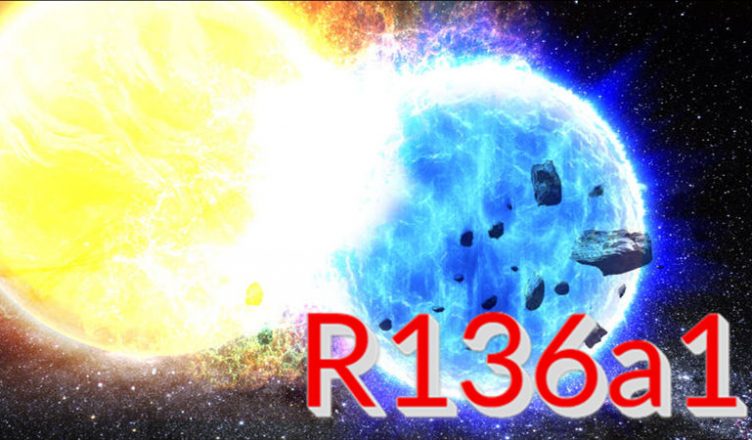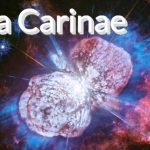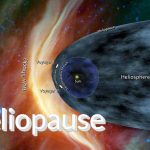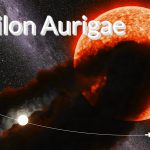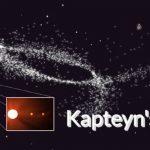When it comes to stars in the universe, R136a1 stands out as one of the remarkable ones. Located in the Large Magellanic Cloud, it is an exceedingly rare and captivating supergiant star with astonishing mass, luminosity, and temperature. One of the notable features of R136a1 is its mass, which far exceeds that of the Sun, making it one of the most luminous stars known. Its existence challenges many theories of star formation and evolution, sparking discussions about the future development of high-mass stars and potential supernova explosions. This article will explore the characteristics of R136a1, its formation and evolution, and the astonishing events it may bring in the future. Let’s delve into this unique star in the cosmos—R136a1.
Discovery of R136a1
1. In 1960, a group of astronomers working at the Pretoria Observatory measured the brightness and spectra of bright stars in the Large Magellanic Cloud. Among them, in the catalog known as R136 within the Tarantula Nebula, a bright object was identified. Subsequent observations revealed that this object, R136, was located at the center of a bright region, which was a direct observation of a massive star-forming center.
2. In 1979, the European Southern Observatory’s 3.6-meter telescope divided R136 into three parts: R136a, R136b, and R136c. The exact nature of R136a remained unclear and sparked intense debates. Estimates suggested that the central region’s brightness would require as many as 100 O-type stars within a space of 0.5 parsecs, with a more likely explanation being a star with 3,000 times the mass of the Sun.
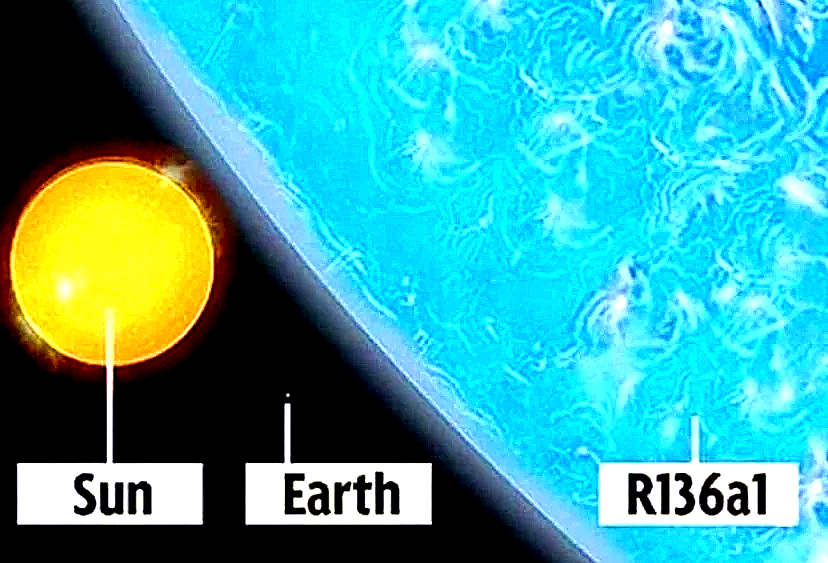
3. Wiggs and Bell provided the first evidence of the R136a cluster in 1985. Using speckle interferometry, R136a was shown to be a cluster composed of 8 stars, with R136a1 being the brightest. The nature of R136a was ultimately confirmed after the launch of the Hubble Space Telescope. Its planetary camera divided R136a into at least 12 parts, revealing over 200 high-luminosity stars within R136. The more advanced WFPC2 discovered over 3,000 stars within a 0.5 parsec space and studied 46 giant luminous stars within a 4.7 parsec radius.
4. In 2010, R136a1 was recognized as the most massive and brightest star. Previous estimates had underestimated its brightness to as low as 1.5 x 10^6 times the luminosity of the Sun. Several prominent figures from the Royal Astronomical Society announced this significant discovery in their monthly reports. Professor Paul humorously remarked, “This is simply a monster, there may be many stars that are brighter than it, but its mass is far beyond.” He also noted that, despite its immense size, this star may have a lifespan of less than ten million years, as larger stars consume energy at a faster rate.
The news of this star’s discovery was published in July 2010 by a group led by Professor Paul Crowther, an astrophysicist at the University of Sheffield in the UK. They used data from the European Southern Observatory’s Very Large Telescope (VLT) in Chile and data from the Hubble Space Telescope to study two star clusters, NGC 3603 and R136a. R136a was previously thought to be a supermassive object with a mass of up to 1000-3000 times that of the Sun. The true nature of R136a was resolved through interferometric spot measurements, revealing it to be a high-density star cluster. The group discovered that some of the stars in R136a had surface temperatures of up to 56,000 K, over seven times that of the Sun, and luminosities in the millions of times that of the Sun. At least three stars had masses of approximately 150 times that of the Sun.
Visibility of R136a1
In the night sky, R136 appears in the core of the Tarantula Nebula in the Large Magellanic Cloud. It required a 3.6-meter telescope in 1979 to detect one of its parts, R136a. Detecting R136a1 within R136a requires space telescopes or complex techniques like adaptive optics speckle interferometry.
Located approximately 20 degrees south of the celestial equator, the Large Magellanic Cloud is visible (at least in part) every night, weather permitting. In the northern hemisphere, it is visible in the southern part, around 20 degrees north of the celestial equator. This excludes North America (except southern Mexico), Europe, North Africa, and northern Asia.
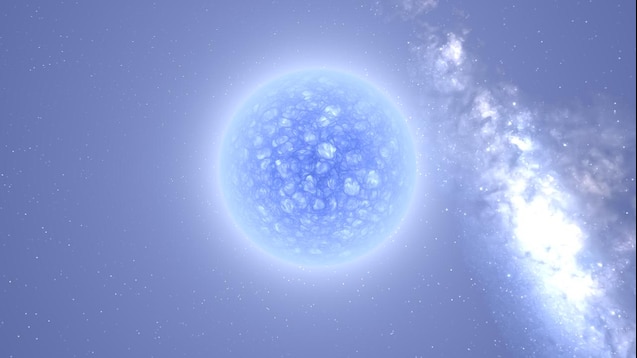
Mass of the R136a1
Star Astronomers from the University of Sheffield, led by Paul Crowther, used data from the Hubble Space Telescope and the European Southern Observatory’s Very Large Telescope to recalculate the mass of the star known as R136a1 within the Tarantula Nebula in the Large Magellanic Cloud, setting a new record.
To put it in perspective, according to the UK’s Daily Telegraph, if R136a1 were placed in the solar system, its brightness relative to the Sun would be similar to the Sun’s brightness relative to the Moon.
According to the Eddington limit, the larger a stellar body’s mass, the more radiation pressure it can emit, and excessive radiation pressure can make the star unstable. Stars with masses exceeding 50 times that of the Sun are generally considered unstable, with 150 times the solar mass being thought of as an upper limit according to Eddington’s limit. Crowther believes that R136a1 is approaching this limit, and “this new record is unlikely to be broken in the short term.” However, R136a1 is currently being eroded by intense cosmic winds, causing its mass to gradually decrease.
Whether it’s a Binary Star
While massive stars in binary star systems are common, there seems to be no substantial evidence indicating a second star in the case of R136a1. Chandra Observatory used X-rays to examine R136. R136a and R136c were clearly detectable, but the mystery of R136a remained unsolved. Another study ruled out R136a1 and R136a2 as a binary pair, while confirming R136a3 as a single star. The high proportion of soft X-rays emitted by the light of R136a1 and R136a2 does not necessarily suggest that they are a binary pair.
Rapid Doppler radial velocity changes can detect stars of equal mass in a closed orbit, but this could not be observed in the spectrum of R136a1. While a high orbital inclination, a more distant binary pair, or the possibility of distant stars orbiting it cannot be entirely ruled out, it is considered highly unlikely. Disparate mass binary stars are possible but would not affect R136a1.
Comparison with Main Sequence Stars
R136a1 is a high-luminosity Wolf-Rayet star, located in the extreme upper-left corner of the Hertzsprung-Russell diagram. Ordinary Wolf-Rayet stars are distinguished by strong emission lines and are often of O-type. These lines include ionized nitrogen, helium, carbon, oxygen, and a few silicon lines, but typically, hydrogen lines are weak or absent. The classification basis of a WN5 star is that the intensity of helium emission greatly exceeds that of neutral helium lines, and it has roughly equal emission intensity for N3, N4, and N5 lines. The “H” in the spectral type indicates significant hydrogen emission lines, leading astronomers to calculate that hydrogen occupies 40% of the mass on the surface of R136a1.
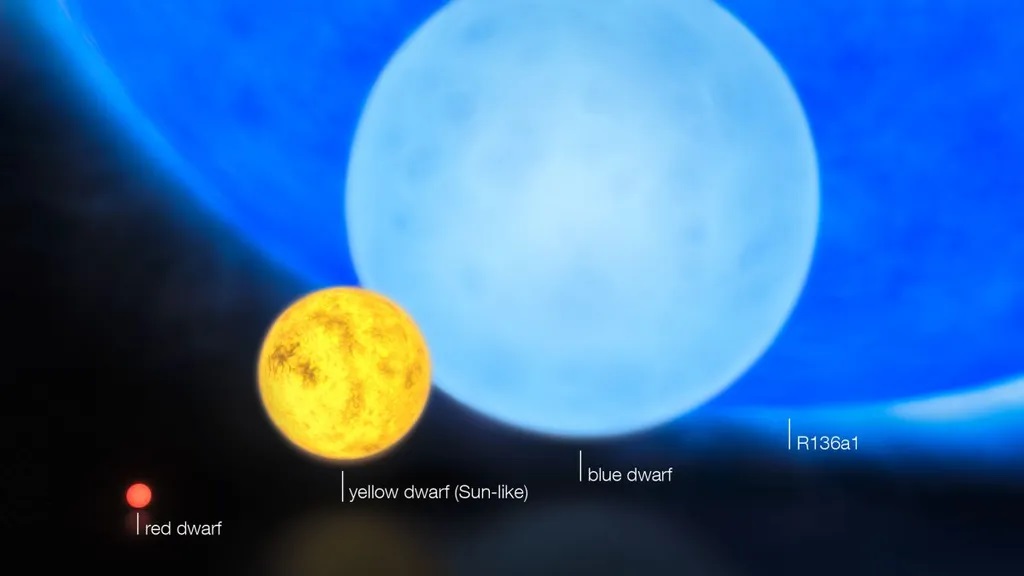
Strictly speaking, R136a1 is not a true Wolf-Rayet star. It hasn’t even burned its core hydrogen completely, hence the strong hydrogen emission lines in its spectrum. Such stars are called “pseudo-Wolf-Rayet stars” and are a result of nitrogen, originally deep in the core, being brought to the surface due to processes like convection or other reasons (such as merging with other stars). True Wolf-Rayet stars, in contrast, have lost their internal hydrogen long before exposing carbon, nitrogen, and oxygen layers, with very little hydrogen content in their atmospheres (these stars are also sources of Ib and Ic type supernovae).
Stars with a spectral classification of WN5h are pseudo-Wolf-Rayet stars that are still burning their core hydrogen. Their emission spectra produce a powerful and dense stellar wind, and the high-intensity helium and nitrogen levels come from the products of the C-N-O cycle mixing with convection on the surface.
R136a1 is currently known as the most massive star and is likely more than one solar mass, including well-known stars like Eta Carinae, Pistol Star, or Pismis 24-1.
The current mass estimate of 265-315 times the solar mass comes from near-infrared (K-band) spectral lines analyzed with combined non-LTE “CMFGEN” and “TLUSTY” standard atmospheric models. The derived model is the WN6h binary star NGC 3603-A1. In the worst-case scenario of a line-of-sight binary or an unexpected binary, each star would be about 150 solar masses. R136a1 was initially a rapidly rotating star with a mass of 320 solar masses and has been burning for 1.7 × 10^6 years. The minimum mass of 256 solar masses is found using the “PoWR” analysis, based on atmospheric models relating light and mass and assuming it is a single star.
Mass Loss of R136a1
R136a1 is currently experiencing extreme mass loss, with its stellar wind reaching speeds of 2600 ± 150 km/s. This is caused by strong electromagnetic radiation pressure and the very high temperature of the star, making its stellar wind much stronger than gravity’s ability to retain matter. Mass loss is attributed to its large mass, low surface gravity, high luminosity, and high heavy element content in the photosphere. R136a1 is losing mass at a rate of 5.1 × 10^-5 solar masses per year (3.21 × 10^18 kg/s), which is over 10^9 times faster than the Sun’s mass loss rate, resulting in a loss of over 50 times the mass of the Sun since its formation.
Luminosity of R136a1
1. R136a1 has a luminosity of approximately 8.71 × 10^6 times that of the Sun, making it the brightest known star. Its power is equivalent to 6.3072 × 10^6 times that of the Sun, releasing in 5 seconds the same energy as the Sun emits in one year. The visible luminosity is approximately 1.5 × 10^5 times that of the Sun. In other words, if it were to replace our Sun, the intensity of visible light received on Earth would be enhanced by a factor of 1.5 × 10^5. At a distance of 10 parsecs, its apparent magnitude is -8.09, far exceeding Sirius at -1.47.
R136a1 supplies about 7% of the ionizing flux to the entire 30 Doradus region in the Large Magellanic Cloud, which includes up to 70 O7 dwarf stars. Combined with R136a2, R136a3, and R136c, they collectively produce 43% to 46% of the Lyman radiation within the entire R136 star cluster.
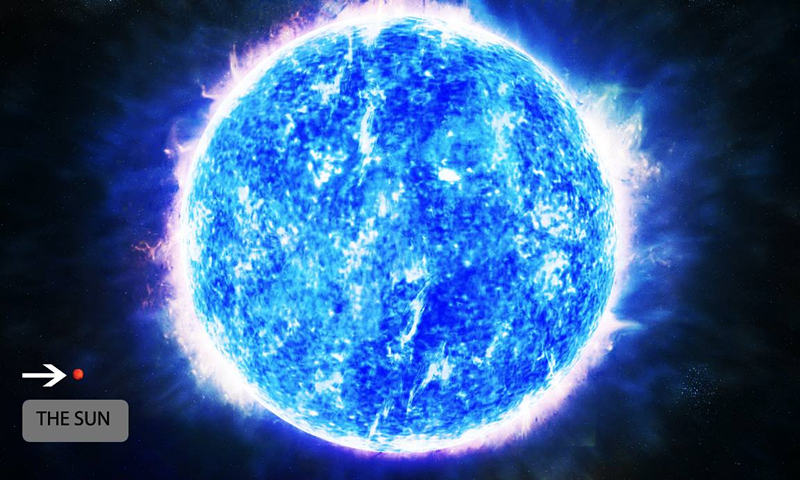
Massive stars close to the Eddington limit radiate outward pressure from their surface that equals the gravitational force of the star. If they radiate energy above the Eddington limit, their outer layers are rapidly expelled. This effectively limits the high-luminosity brilliance of the star over a long period. The classical Eddington luminosity limit does not apply to R136a1, a star that is not in hydrostatic equilibrium, making its calculations exceedingly complex. The classical Davidson-Humphreys limit has been confirmed as the brightness limit observed for stars, but recent models attempt to calculate a theoretical Eddington limit applicable to high-mass stars. R136a1’s luminosity is 70% of the Eddington luminosity.
2. R136a1’s thermal luminosity is approximately 6.166 million times that of the Sun, making it one of the most luminous stars known. Its power is equivalent to 6 million times that of the Sun, releasing in 5 seconds the same energy as the Sun emits in one year. The visible luminosity is approximately 164,000 times that of the Sun. In other words, if it were to replace our Sun, its apparent magnitude could reach -40. At a distance of 10 parsecs, its apparent magnitude is -8.18, far exceeding Sirius at -1.46.
R136a1 supplies about 7% of the ionizing flux to the entire Swordfish Constellation 30 region, which includes up to 70 O7 dwarf stars. Combined with R136a2, R136a3, and R136c, they collectively produce 43% to 46% of the Lyman radiation within the entire R136 star cluster.
Massive stars close to the Eddington limit radiate outward pressure from their surface that equals the gravitational force of the star. If they radiate energy above the Eddington limit, their outer layers are rapidly expelled. This effectively limits the high-luminosity brilliance of the star over a long period. The classical Eddington luminosity limit does not apply to R136a1, a star that is not in hydrostatic equilibrium, making its calculations exceedingly complex. The classical Davidson-Humphreys limit has been confirmed as the brightness limit observed for stars, but recent models attempt to calculate a theoretical Eddington limit applicable to high-mass stars. R136a1’s luminosity is 70% of the Eddington luminosity.
Temperature
R136a1 has a temperature exceeding 50,000 K (56,000 K), which is nearly 9 times higher than that of the Sun and corresponds to the extreme ultraviolet radiation peak. The B-V color index of R136a1 is approximately -0.03, a typical color index for a W-type star. The U-V color index obtained from the Hubble Space Telescope’s WFPC2 with filters at 336 nm and 555 nm is -1.28, indicating it is an extremely hot star. However, this value is not yet confirmed and, therefore, is not included in the basic information. This “contradictory” color index is indicative of reddening and luminosity reduction due to interstellar dust. The reddening (E(B-V)) can estimate the level of luminosity reduction (A(V)). The measured E(B-V) value is between 0.29 and 0.37. Due to light pollution from neighboring star R136a2, A(V) is around 1.80, and B-V color index is around -0.03 (B-V0), making it subject to considerable uncertainty.
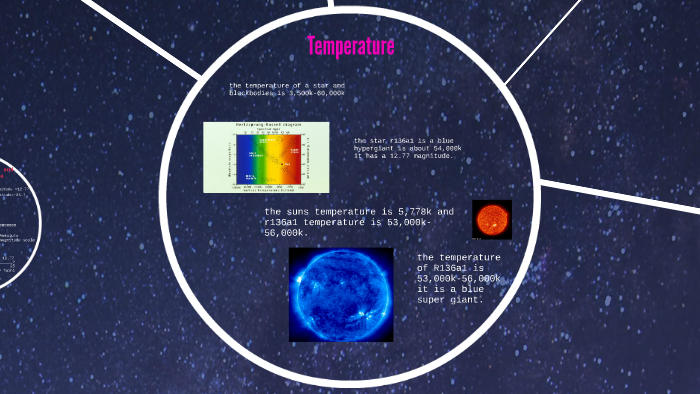
While a star’s temperature can be estimated from its apparent color, this method is not very accurate. To obtain an accurate temperature, atmospheric models based on spectroscopic fitting are necessary. R136a1’s surface temperature of 53,000 ± 3,000 K was determined using different atmospheric models. An older atmospheric model yielded a temperature of about 43,000 K, significantly lowering the predicted luminosity. The extreme temperature of the star places its radiation peak at around 50 nm, with nearly 99% of its radiation emitted outside the visible range.
Diameter
The diameter of R136a1 is a subject of debate, but the latest data suggests a radius between 28 and 36 times that of the Sun. In fact, R136a1’s radius is smaller than that of Betelgeuse. The actual radius of R136a1 is between 28.8 and 35.4 times the radius of the Sun. The largest known star in terms of radius is UY Scuti in the constellation Scutum, with a radius of approximately 1708 ± 192 times that of the Sun. R136a1 doesn’t have a well-defined visible surface like the Earth or the Sun. The static core of the star is surrounded by a dense atmosphere that accelerates outward into the stellar wind. The surface at any arbitrary point in this stellar wind is defined as the measured radius, and different authors may use different definitions. For example, a 2/3 Rosseland optical depth corresponds to a visible surface, while 20 or 100 Rosseland depths are more representative of the physical photosphere. The star’s temperature is typically measured at the same depth, so the star’s radius and temperature correspond to its luminosity.
R136a1’s size is much smaller than the largest stars, such as red supergiants, which can have radii hundreds to over a thousand times that of the Sun. Despite its high mass and modest size, R136a1 has a density of only 10% of the average density of the Sun, approximately 1.4 × 10 kg/m³.
Rotation
The rotation speed of R136a1 cannot be directly measured due to the dense stellar wind obscuring the photosphere, and the absorption lines used for measuring rotation broadening are not present in the spectrum. The wind produced by emission lines at 2.1 µMNV is relatively deep and can be used to estimate the rotation speed. In R136a1, it has a width of about 1.5 nm, indicating that it is a slowly rotating or non-rotating star, although its magnetic poles might be aligned with the Earth. R136a2 and R136a3 rotate rapidly, consistent with evolutionary models. R136a1’s rotation speed is about 200 km/s, and the equatorial rotation speed remains approximately the same after about 1.65 × 10^6 years.
Current State
R136a1 is still in the phase of fusing hydrogen into helium, primarily due to the high-temperature core’s C-N-O cycle. Because it is a pseudo-Wolf-Rayet star, it is still young. The reason for its pseudo-Wolf-Rayet spectral features is the high-level helium and nitrogen-dense stellar wind from the core to the surface, which directly results in its extreme brightness. Over 90% of the star is in the convection zone, with only a small non-convective layer at the surface.
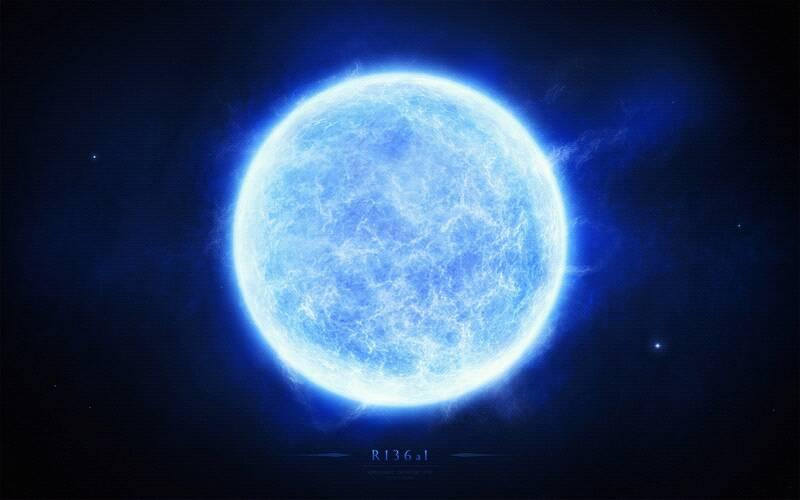
Phenomenon Questioned
High-mass stars also release tremendous amounts of energy. For example, in the case of Pistol Star, the energy released within 20 seconds is equivalent to the total energy the Sun emits in a year (while R136a1 accomplishes this in just 5 seconds). During this process, there is a rapid decrease in mass. Crause stated, “Stars are not like people; they are born with great mass and gradually become lighter as they age. R136a1 is already a middle-aged star, and its mass has significantly decreased.” The foreign media, “The Daily Telegraph,” stated that R136a1 has consumed 20% of its mass in a short time of 1.7 × 10^6 years, and its current mass is equivalent to 265-315 times that of the Sun. Due to the rapid mass loss, these “supermassive” stars are mostly short-lived. Crause mentioned, “The largest stars can only survive for tens of millions of years. In astronomy, this is extremely short-lived.”
Development
Models of star formation from accreting molecular clouds can predict an upper limit on the mass of stars, where radiation can prevent further growth before stars with masses like R136a1 can form. The simplest accretion models predict a metallicity lower limit of 40 times solar, but more complex theories allow for several times higher masses. The empirically accepted mass limit for stars is around 150 times solar. R136a1 significantly exceeds these limits, potentially opening the possibility for new single-star accretion development models to remove the upper limits. It is also possible that high-mass stars merge to form even more massive stars.
As a single star formed through accretion, the nature of such a massive star remains uncertain. Synthetic spectra suggest that it will never have a main-sequence luminosity type (V) or even a normal O-type spectral type. Due to its high luminosity near the Eddington limit and strong stellar wind, once R136a1 becomes a visible star, it may be classified as a WNxh-type star. Due to the large convective core, high mass loss at the surface, and the unique Wolf-Rayet spectrum generated by its stellar wind, helium and nitrogen are rapidly mixed to the surface. R136a1 has a high mass but appears relatively “cool” for its metallicity, with a temperature estimated at 5.6 × 10^4 K, indicating a mass of about 150-200 times that of the Sun, slightly cooler than some high-mass main-sequence stars.
During the hydrogen-burning process in the core, the percentage of helium increases gradually. According to the Virial theorem, this means that the core temperature and pressure will increase. This results in an increase in luminosity, making R136a1 slightly brighter than when it formed. R136a1’s temperature has slightly decreased, the star’s outer layers have expanded, and mass loss is occurring at a faster rate.
Future
The future development of R136a1 is uncertain, with no similar stars to confirm predictions. The evolution of high-mass stars depends on the mass they lose, and different evolutions yield different results, with none being a perfect match. It is believed that WN5h stars will develop into high-luminosity blue variables, and as hydrogen becomes depleted in the core, they will go through an important stage of extreme mass loss, referred to as the hydrogen-free Wolf-Rayet stage, at a metallicity similar to that near the Sun. Strong core-to-surface mixing due to the large convective core, high metallicity, and additional “rotational mixing” can bypass the evolution from high-luminosity blue variables to hydrogen-rich WN to hydrogen-poor WN phases. Hydrogen fusion can last for 2 × 10^6 years, and R136a1’s mass will shrink to 200-215 times that of the Sun at the end of hydrogen fusion. Like high-mass single stars, even if it starts rotating rapidly, the rotation speed will slow down to near zero by the end of hydrogen fusion.
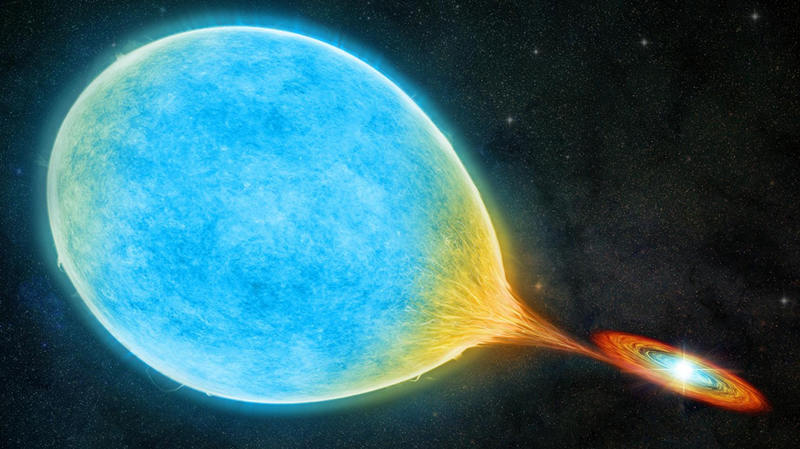
As helium fusion begins in the core, the remaining hydrogen in the atmosphere is rapidly lost, and R136a1 will rapidly become dimmer, similar to hydrogen-free stars. The difference for Wolf-Rayet stars at this point is that they are located at the zero-age main sequence on the Hertzsprung-Russell diagram, resembling main-sequence stars but at higher temperatures.
During helium fusion, carbon and oxygen accumulate in the core, and the star continues to lose a significant amount of mass. This ultimately leads to the development of a WC spectrum, although it is a metal-rich star, most of the helium is expected to burn during the WN phase. When helium fusion ends, the increase in core temperature and mass loss leads to a sudden increase in luminosity and temperature, with the spectrum type becoming WO. The final stages of burning last only a few hundred to a few thousand years. R136a1’s mass will eventually shrink to 180-220 times that of the Sun, a scenario very similar to Canis Majoris VY, albeit with slightly different spectra.
Supernova Explosion
When the core of a star, which produces carbon and oxygen (C-O core), exceeds the maximum mass of a white dwarf (about 1.44 times that of the Sun), it inevitably undergoes core collapse at some stage. This typically occurs in a core that has already produced and fused iron, which can no longer generate the energy required to prevent core collapse, although it can happen in other situations.
A C-O core with a mass of around 64-133 times that of the Sun becomes extremely hot, and high-energy gamma photons will generate electron-positron pairs due to their interactions. Since the energy released when electron-positron pairs annihilate is less than the energy of the gamma photons that form them, the loss of energy makes the core extremely unstable. Eventually, the core collapses under the pressure of gravity, and the sudden temperature rise triggers a core explosion that obliterates the entire star, leaving no remnants (such as a neutron star or black hole), only a nebula, becoming an unstable pair-instability supernova (PISN). (Sometimes also referred to as a pair-creation supernova (PCSN)). A PISN typically only occurs in stars with very low metallicity, no significant mass loss (ensuring a C-O core mass of 64 times the Sun or more). This can also happen in stars with very high metallicity, but the predicted C-O core mass for R136a1 is less than 50 times that of the Sun, so the likelihood of PISN formation is nearly zero.
The collapse of an iron core can lead to a supernova explosion, sometimes with a gamma-ray burst (GRB). This type of supernova explosion is classified as type I because the star has no hydrogen, specifically type Ic because it has almost no helium. Especially large iron cores might collapse the entire star into a black hole after the explosion, and the supernova’s “subdued” light will serve as radioactive material 56Ni falling back onto the black hole. Other models predict that such a large core will produce a very large amount of 56Ni, resulting in a super-bright supernova.
Type Ic supernovae can produce GRBs when a star rotates and has the right mass. R136a1 is expected to have a very low rotation speed at that time, and the core will collapse, so there is significant debate about whether it can produce a GRB.
Whether a type Ic supernova with core collapse forms a neutron star or a black hole depends on the core’s mass. R136a1’s core will be significantly higher than the maximum mass for a neutron star, so the formation of a black hole is inevitable, and it will have extremely high mass.
END:
As we peer into the depths of space, R136a1 remains a celestial enigma that promises to unveil more secrets about the universe. Its remarkable attributes challenge conventional knowledge of stellar evolution and open doors to new frontiers in astrophysics. The future of R136a1 is uncertain and full of possibilities. Will it ultimately give birth to a black hole or lead to a spectacular supernova event? As we continue to explore the cosmos, studying enigmatic giants like R136a1 offers us a glimpse into the mysteries of the universe and the promise of new discoveries. The story of R136a1 is far from over, and it continues to captivate the imaginations of astronomers and stargazers alike, reminding us that the cosmos is a boundless realm of wonder and endless exploration.
More UFOs and mysterious files, please check out our YouTube channel: MysFiles
Andromedans Encounters: Reveal the history of humanity
